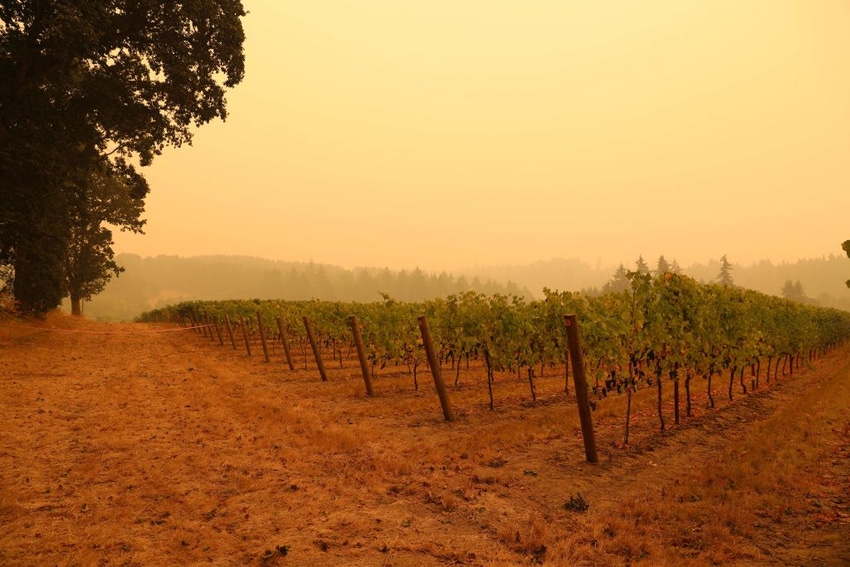
Describing the process and dangers of smoke taint to grape growers, vintners, and other assorted members of the industry is analogous to preaching to the choir.
They already know that the grapevines themselves are resilient to wildfire and in some cases, vineyards themselves act like fire breaks. University of California, Davis Viticulture and Enology experts say that although yield may be impacted, grapevines will fully recover if they didn’t actually burn.
As John Aguirre, president of the California Association of Winegrape Growers told an Associated Press reporter: “The wildfires, without question, represent the single worst disaster the wine grape growing community has ever faced.”
In many cases, it’s not just the flames that are problematic, but the ash and smoke exposure with the risk increasing by prolonged or repeated exposure to heavy fresh smoke.
“Although the predictive ability is not 100% due to synergistic and matrix effects, we strongly advise growers and wineries to test their grapes to determine potential risk,” according to the UC Davis treatise on Wildfire Impact on California Grapes and Wine.
It’s a valid suggestion that may prove even more difficult to accomplish because of the smoky pallor hanging over much of the West Coast grape country. One of the frequently used labs [ETS in Napa] tells current customers that sampling will take upwards of six weeks.
“Turnaround times will improve as we work our way through the initial surge of samples” they advise, noting they are working on a pool of grape berry smoke impact samples that began to steadily arrive as far back as late August/early September.
"If you are a new client, we will be pleased to accept your samples,” they report. “We anticipate we will be able to start processing those samples no sooner than November.”
An early-September press release from CAWG offered some clarification. “Unless specified in a contract, no buyers should believe they are entitled to reject a grower’s grapes based on concerns over smoke damage without corroborating evidence to indicate those grapes have, in fact, been damaged,” Aguirre said.
Another respected industry voice, the September Ciatti California Grape Market Report out of Novato, commented: “Even though, in many cases, there was no direct physical damage to vineyards and processing facilities, smoke exposure concerns had a substantial effect on our industry and consequences are being felt by mainly Coastal growers and the bulk wine market.”
A laboratory backlog
Speaking to the issue of smoke taint laboratory backup, the report notes the backlog comes “just at a time when Brix levels on some varietals are ready to pick. The bulk market has been as busy as we’ve seen it in the past three years, active across all categories, as buyers become more skeptical about the availability of bulk wine on the market moving forward.
“Overall, the 2020 crop currently seems to be coming in lighter than average with harvest in the North Coast running up to two weeks early and the Central Coast a bit more advanced. The Interior is about halfway through harvest and timing feels normal with lighter-than-average yield.”
Because there is no game plan for situations and conditions like this, seat-of-the-pants responses lead to an as-yet-unknown future. Just as firefighters begin to get a handle on one set of flames, new fires break out in the heart of Napa Valley with more vineyards under threat or falling victim.
Grape growers on the East Coast can only watch and offer their sympathetic support.
In New York, the folks overseeing vineyard crop development at Cornell University Agritech Lab wrote in their current newsletter: “Our colleagues on the West Coast have been robbed of the welcome chaos of harvest. Grapes, fickle, sensitive, and dependent on climate, are about the most reliable aspect of life right now. No matter the outrage in the headlines, grapes need to be picked.
“California growers have been robbed of the healthy distraction of the annual harvest, a destabilizing and debilitating uncertainty on top of all the others. We on the East Coast count our blessings and send our support.”
For more news on pests, disease management and other issues affecting vineyards, subscribe to the bi-monthly newsletter The Grape Line.
About the Author(s)
You May Also Like




